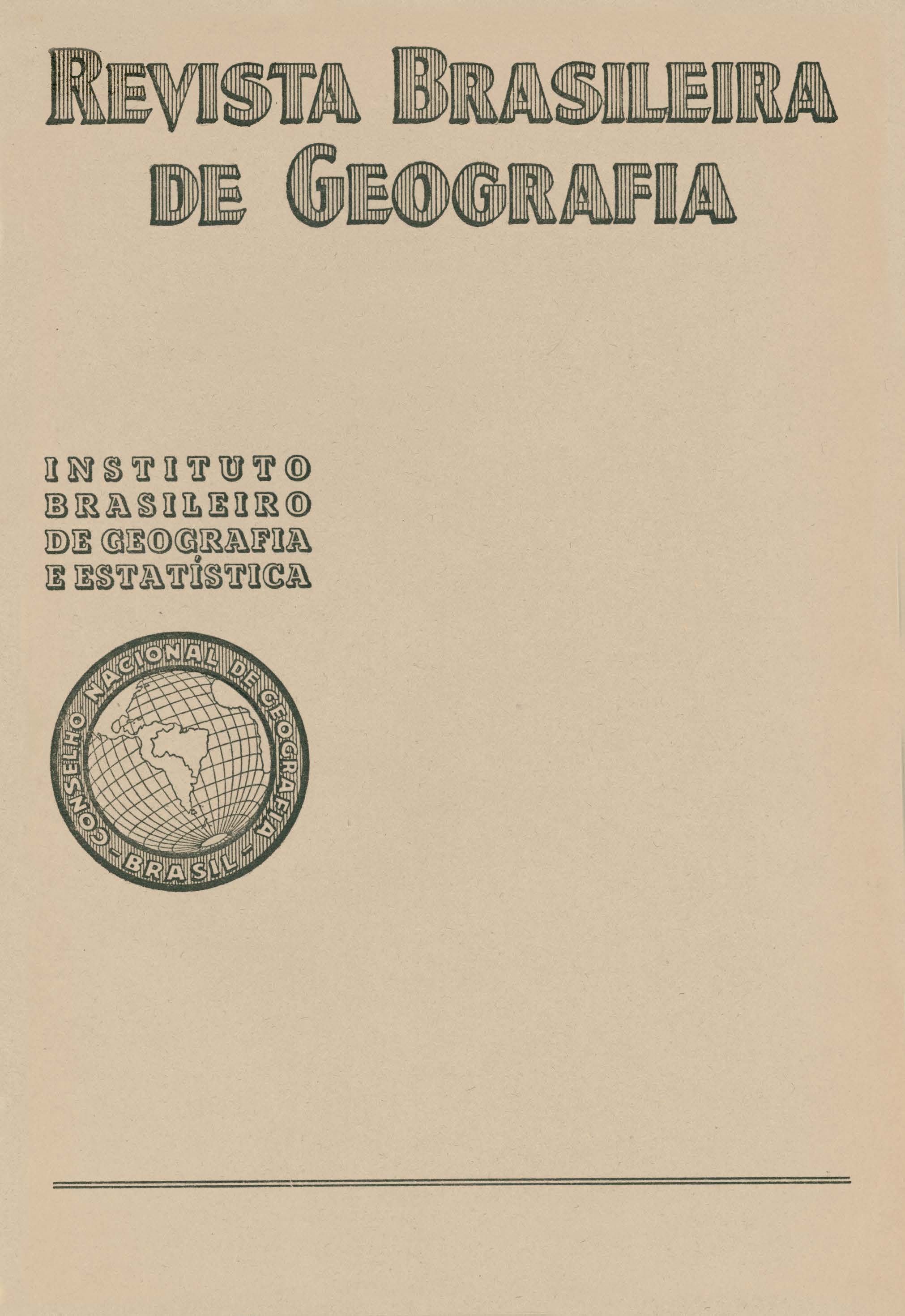Circulação atmosférica do Nordeste e suas consequências : o fenômeno das secas
Palavras-chave:
Brasil, Nordeste;, Circulação atmosférica;, Circulação atmosférica; Secas.Resumo
Examining the circulation of the atmosphere in the Brazilian Northeast from various aspects, the author proceeds to an analysis divided into three separate parts: Normal Circulation, Secondary Circulation and Drought Forecasts.
The normal circulation varies according to the seasons: In the northern summer, the intertropical front is concentrated near 10°N, and in September it reaches the farthest south. In the southern summer. it moves closer to the equator, attaining its southernmost position in March. The center of action over the Atlantic rises to maximum pressure in winter and sinks to minimum in summer. As the intertropical front brings rain and the Atlantic center of action is productive of fine weather, the rainy season inland in the Northeast lasts from January to April when the intertropical front moves the farthest south, leaving the other months dry and dominated by the center of action, with exception of the eastern seaboard where the center of action is often counteracted by a low pressure belt.
Nonetheless. the rainy season in the backlands of the Northeast is not unwaveringly constant. There are years when the rainfall is excessively low, while in others it is relatively plentiful, and this depends on the oscillations of the intertropical front and the polar fronts of the Northern and Southern Atlantic.
In the first case, characteristic of the dry years, the cold mass of polar origin has little energy and the (South) Atlantic polar front. acquiring a SW-NE orientation, imparts a similar orientation to the intertropical front, with the result that the Brazilian Northeast is left without rain under the domination of the center of action.
In the second case, characteristic of the wet years, the Atlantic polar front reaches Bahia with an E-W orientation and the center of action retreats in the direction of the Atlantic, allowing the intertropical front, traveling from E to W, to drop down to the Northeast, attaining the Pernambuco-Bahia state line after surmounting the Araripe mesa and the Borborema plateau, while the rains of the continental equatorial mass advance toward the latter farther than the Ibiapaba range. This situation always coincides with the invasion of the northerns in the West Indies, which is very common in winter from January to March.
In practice it is possible to forecast these phenomena, and apart from the resulting importance to the regional economy of the Northeast, this would assist in establishing forecasts for other regions of the country and would therefore seem to call for closer attention on the part of state and federal authorities and of Brazilian public and private agencies.






